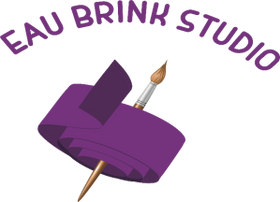When Fabric Talks Back: Letting Your Materials Guide the Design
As a textile artist, I’ve learned to listen as much as I create. Not just to ideas or inspiration — but to the materials themselves. Fabric, thread, paper, even wire or paint — each one has a voice, a character, a way of behaving. And if you’re willing to tune in, they’ll often lead you somewhere far more interesting than anything you could plan.
This isn’t about controlling every detail. It’s about building a relationship with your materials — allowing the work to become a conversation rather than a command.
So what does it mean to let your fabric “talk back”? And how can you use that response to shape your design? Here’s how it works for me.
🧵 1. Start with Curiosity, Not Control
When I begin a piece, I rarely have a final image in my mind. I might have a colour, a texture, or even a feeling — but the outcome? That evolves as I work.
I begin by gathering materials that speak to me in that moment: maybe it’s a worn piece of lace, a stiff hand-dyed cotton, or a sheer organza that shifts in the light. I touch, fold, layer, and let the textures guide the direction. I don’t force the design to match a preconceived plan. I let it unfold.
🧶 2. Materials Behave Differently — And That’s the Point
Some fabrics fray beautifully. Others curl, collapse, or hold their shape in unexpected ways. Threads can sink in or sit proud on the surface. Certain paint mediums might resist the fabric or seep in unpredictably.
Instead of resisting those behaviours, I work with them. I might deliberately choose a fabric that misbehaves — that warps or distorts — because it adds something to the piece. These unpredictable qualities often become the most exciting parts of the work.
🎨 3. Trust the Unexpected
There are always surprises. A heat tool melts more than expected. A layer shifts. A fabric buckles under stitching.
When these things happen, I ask myself: what is this telling me?
Instead of correcting, I respond. Maybe a line of stitching follows the new curve. Maybe I tear, tuck, or overlay. These moments of "imperfection" are often where a piece comes alive.
🪡 4. The Work is a Conversation
One of the most exciting things about being a textile artist is that you’re never truly working alone. The fabric has its say. The thread leaves its trace. The needle pulls a path through layers that shift beneath it.
The more I lean into that relationship — the give and take between me and my materials — the more authentic the finished piece becomes.
✨ Final Thoughts
Letting fabric guide the design doesn’t mean giving up control. It means co-creating. It means allowing space for discovery, for texture, for those tiny surprises that no sketch could ever plan for.
So the next time your fabric folds the "wrong" way or a thread refuses to behave — don’t silence it. Listen. Follow its lead.
You might find that the best ideas don’t come from your head at all — they come from your hands, your eyes, and your beautiful, unpredictable materials.
Do your materials ever take over the creative process? I’d love to hear how you respond to fabric that talks back. Leave a comment or tag me in your work on Instagram @eaubrink_studio





Leave a comment